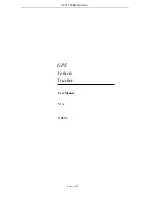
Tip: There are several daytime and night colour schemes included with ASUS GO. To select
the one that suits your needs the best, make your selection in Settings.
Tip: To further enhance the effect of the night colour scheme, you can instruct ASUS GO to
decrease the display backlight when the night colours are used. Set the desired backlight
levels for both daylight and night modes.
Note: The colours mentioned and screenshots included in this manual refer to the default
daytime and night colour schemes. They may not look the same in the schemes you have
chosen.
Tip: If you use ASUS GO after sunrise or before sunset, look for the sun in the sky in the
map background using a flat 3D view. It is displayed at its actual position to give you another
way to orientate, and also to provide some eye candy.
Streets and roads
The similarity of ASUS GO to paper roadmaps is also convenient when it comes to streets,
the most important elements of the map concerning navigation. ASUS GO uses similar
colour codes to those you are accustomed to, and the width of the streets also refers to their
importance, so it will not be difficult to tell a highway from a small street.
Streets and roads have names or numbers for identification. Of course, this information
can be displayed on the map. ASUS GO uses two different ways to show street labels. The
conventional way is the same as a roadmap – it displays the name of the street aligned with
the street. The alternative is a kind of virtual signpost stuck into the street itself.
Summary of Contents for R300
Page 1: ...R300 Portable Navigation Device User Manual Quick StartGuide E3402 ...
Page 11: ...11 Getting to know your R300 Chapter 1 ...
Page 13: ...13 Rear and side features 7 8 9 11 12 10 ...
Page 21: ...21 Set Date Set time Set time format ...
Page 175: ...175 Multimedia features Chapter 3 ...
Page 185: ...185 Phone features Chapter 4 ...
















































